"Suitcase" against asylum
Verdun fortress refuges are classified by main types 3:
No. 1 - Stone sandstone or limestone hideouts, generally soft, 1 - 1,5 meters thick in the castle, covered with 2 - 5 meters of earth.
No. 2 - Refuge of the same materials, reinforced with a concrete mattress thickness of about 2,5 meters (sometimes less), with an intermediate layer of sand in the 1 meter thickness.
No. 3 - Shelters with supporting walls made of special concrete, with overlappings of reinforced concrete slabs of various thicknesses, depending on the position of the object on the front.
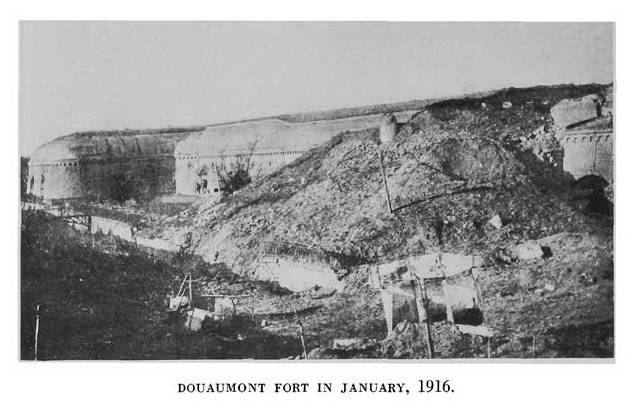
All of them were built on clayey soil or on fissured limestone, more or less durable.
420-mm shell
The total weight of the projectile is 930 kg, the bursting charge 106 kg (subsequently, a new projectile weighing 795 kg with a bursting charge 137 kg was introduced). The shells had a pipe with a slowdown; they produced craters from 8 to 13 meters in diameter and from 2,5 to 6 meters in depth (depending on the soil). In clayey limestones, an 420-mm shell sometimes made a very deep channel. 18 February 1915, one of these projectiles that fell at an angle of 60 degrees to the horizon at the glacis of Gorki fort, made a channel from 0,6 to 0,8 meters in diameter and 10,1 in limestone rock with a fissure and rather poor quality meters along the trajectory, or 8,75 meters, counting vertically.
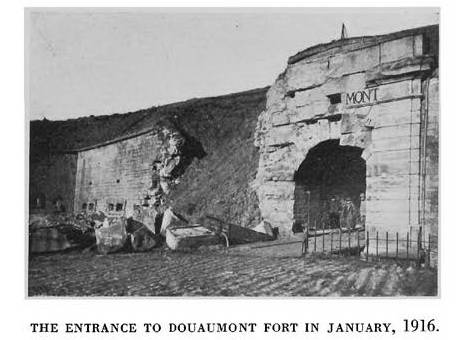
Impact on ordinary stone buildings
Falling behind the scarp and counter-scarp walls, 420-mm projectiles destroyed them at 8-15 meters in length, depending on the distance of the drop point from the inner surface of the wall and on the properties of the soil and masonry.
The 4 such bombs, which fell on the fort behind the scarp and counter-escarp walls, created a gap in them about 30 meters in length.
Stone buildings of type No. 1 were pierced by these shells; the arches were pierced with a knife, and the effects of gases often destroyed the front walls of the casemates. A projectile pierced a cylindrical canal 8 meters in length, then struck 2's vault 2 and 1,5 meters thick, and finally, the top of the projectile dug 0,5 meters into the cellar wall.
Once in a vault of unreinforced concrete with a 4 meter thick, an 420-mm projectile punched it, and continuing on its way, it punched the wall into the 1 meter thick and then penetrated the opposite wall into the 0,5 meter; There was no explosion.
Although these projectiles undergo considerable resistance when passing through embankments and masonry - yet the loss from this of their speed was not always sufficient for the action of the bottom tube with which they were supplied; that is why many of these shells did not explode. These shells could penetrate the second set.
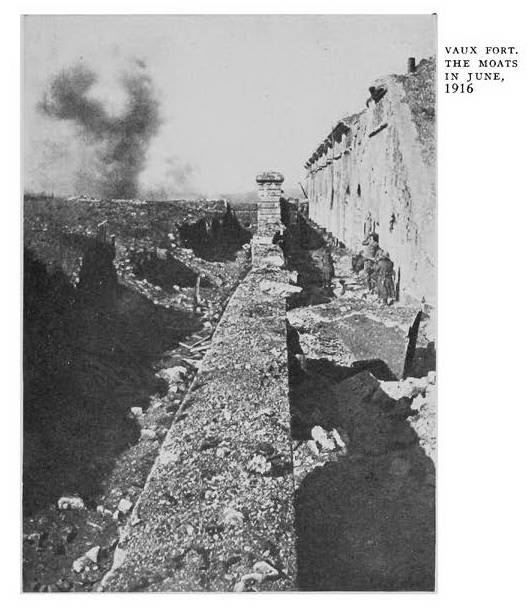
Action on concrete
Stone buildings of type No. 2 could have been pierced by these shells, - as was the case at one of the 15 forts in February 1915 g. The hole formed was from 3 to 4 meters in diameter. However, it should be noted that these vaults were protected by powder of sand in the 1 meter over a concrete mattress only 1,5 meter thick.
One projectile, which fell above the entrance to a hardened-type powder cellar, destroyed concrete in 7 meters in length, 3 meters in width and about 0,6 meters in depth.
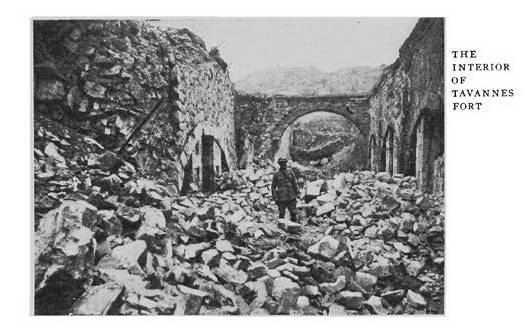
Shelters such as No. 3 were often destroyed by these shells.
Reinforced concrete slabs 1,25 meters thick, overlapping the course of the message, were punched.
The 1,5 meter-thick concrete slabs that covered the shaft shelters, the wardrobe trunks and the cellars were also pierced, and the 0,25 meter slabs that are thick, which sometimes separated the floors in the shelters, were probably destroyed by gas. shell fragments. The bomb exploded in the stove; in fact, on the upper side of the slab was a funnel about 0,7 meters in diameter and 0,6 - 0,7 meters deep; then an explosion chamber followed, in which the concrete was turned into dust and the iron was destroyed over the length of the 1,5 - 1,8 meter. In the 1,5 meter thick slabs, the last iron rods, before being killed, were strongly curved.
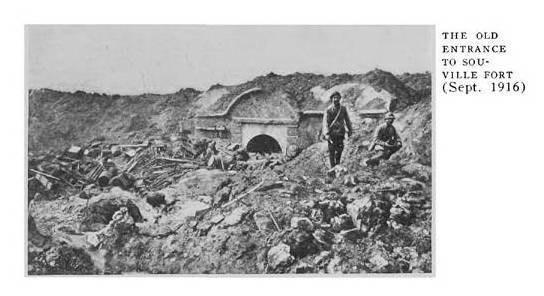
In one fort, the 1,64 meter-thick slab overlapping the cellar was not completely destroyed; the last iron trades were not interrupted, and only bent, with the greatest bend of the latter reaching 0,5 meters in circumference, 2,2 - 2,5 meters in diameter. And the concrete, broken into pieces of medium size, these thrusts still supported. Indoors there were no traces from the explosion of the projectile.
In one of the fortifications, a meter-thick 1,75 slab, which overlaps the intermediate caponier, hit an 420-mm projectile near its support, which caused only an insignificant deflection on its lower surface; the last rows of reinforcement remained unharmed.
Getting into the concrete collars or avant-alles of armored towers, 420-mm shells caused cracks in the massif, demolishing it to a depth of 1 - 1,65 meters. At the same time, some of the shaped stones moved apart and collided. The correction of such damage, in general, was carried out quickly.
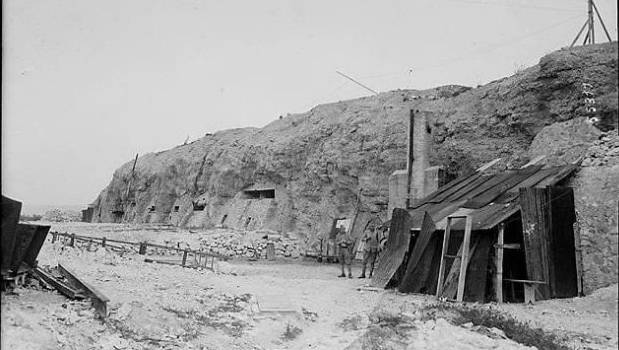
These initial observations made it possible to state that slabs or arrays of reinforced concrete, in order to withstand a single hit of an 420-mm projectile, should have a thickness of at least 1,75 meter.
In one of the forts, iron reinforcement of concrete was often bare. Traces of the concrete mass in which it was immersed were absent. Apparently, the separation of iron reinforcement from the concrete mass was facilitated by the fact that the vibrations caused by a powerful blow and the subsequent explosion of the projectile have different speed and tension in the iron and concrete, and thus contribute to the separation of these two materials.
In general, around the points of impact of these projectiles, separation of successive concrete layers was observed, which was revealed by the separation of the outer surface. Destroyed concrete has been broken into small pieces and often turned into powder.
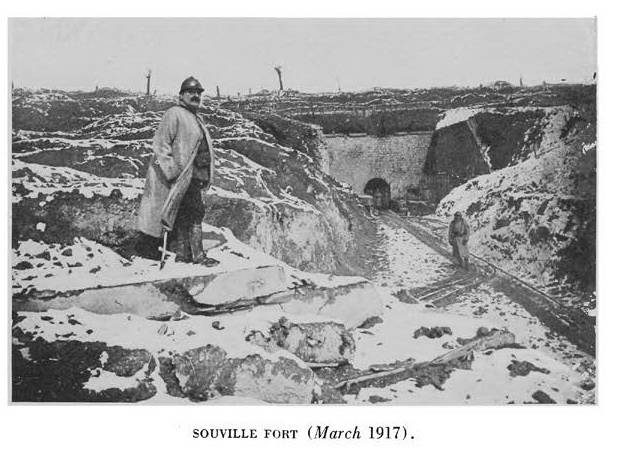
An 420-mm projectile could destroy support walls, arches and slabs of special concrete; he most often divided them into large pieces, about 0,5 cubic. meter Some of them were thrown back by a projectile explosion, but others often remained in balance, thus protecting the massif from complete destruction.
380-mm shells
Total weight 750 kg, bursting charge 68 kg, initial speed 940 meters per second.
Mound action
In the mounds, these shells created 3 funnels - 11,5 meters in diameter and depth (in clay) from 4 to 5 meters. In the sandy and stony soil depth was less.
Action on ordinary stone buildings
380-mm projectile is equipped with a bottom tube without slowing down, and therefore explodes at the moment of impact on a solid barrier. If the structure did not have a slab that took over the explosion of the projectile, the projectile could destroy type 1 shelters, forming holes from 3 to 4 meters in diameter in them.
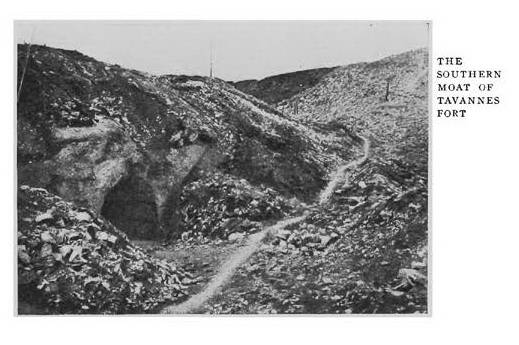
The shell destroyed scarp and counter-scarp walls on 5 - 6 meters in length and about 4 meters in height.
In one case, the outer wall of the scarp gallery, the thickness of the 1,3 meter, was pierced, and the inner wall was not seriously affected.
Action on the city
Since the 380-mm naval gun had great power and a very long range of fire (38 kilometers), the Germans often used it for bombing cities, and in particular for bombing Verdun.
4 June 1915, about thirty such shells were fired at this city.
Projectile fragments, accompanied by a multitude of stones, fly apart on 200 - 300 meters. The screwed bottom, which is 12 cm thick and weighs 54 kg, is almost always unharmed and is thrown back.
When normalized from the front side to the stone buildings of an ordinary device, the action of explosive charge gases destroyed everything, emptying at least 15-meter space, but the gas pressure quickly weakened, and already in 20 meters, ordinary walls and even partitions remained intact.
On the example of the study of a large number of houses of Verdun the following is noted:
1) If the house consisted of an attic, lower floor and basement, the attic and the lower floor were destroyed by hitting an 380-mm projectile in the roof, and the basement usually remained intact.
2) With a similar hit into a multi-storey building, there was a destruction of the upper floors, while the lower ones remained undamaged - provided that the building materials were of sufficient quality and the floors between the floors were sufficiently strong.
House number 15 on Rue de la Reviere could serve as a characteristic example: the attic and the upper floor, which were freed from the occupants before the bombardment, were destroyed, but in the dining room, which was in the lower experience, the hanging objects remained intact, and there was nothing in the kitchen broken. In the neighboring house, damage to the lower floor was apparently caused by the collapse of the interfloor overlap caused by the explosion of the projectile and the fall of furniture from the upper floor and the attic.
In the Beaurepaire barracks, the destruction only touched the attic and the upper floor, and was stopped by the roof of the next floor. Similarly, in the Buvignier school, the two upper floors were destroyed, but the lower one remained intact.
In the absence of underground shelters, the French recommended hiding from the shelling of 380-mm shells in the back corridors of the lower floors of multi-storey barracks, as well as in the vaulted cellars of houses (subject to strengthening - as will be said later - from the threat from 305-mm shells). On earthen sprinkling of casemates it is necessary to make slabs perceiving explosions.
Action on buildings of type number 2
380-mm shells were made on buildings of type number 2, apparently, only a superficial impact. Probably, these shells (and not 420-mm) should be attributed to the relatively weak destruction of the casemates, as well as the powder cellar, reinforced by type No. 2. There were funnels 0,6 meters deep and 2-3 meters in diameter, and from 2-x shells that fell almost simultaneously - funnels about 1 meters deep.
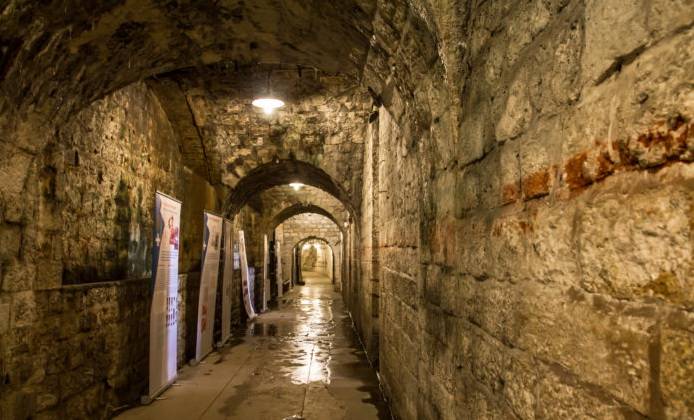
The gallery connecting the casemates mentioned above was simply covered with a slab of special concrete 2 meter thick. The concrete cracked from the impact of the projectile, and large pieces of it, up to cub. meters each, were repulsed from the vault and from the supporting wall. When hit 380-mm bomb, the effect of a layer of sand between the concrete slab and ordinary masonry was very significant, because in the casemates, reinforced with a layer of sand and a concrete slab, there were no signs of concrete damage.
Asylum Action No. 3
One 380-mm projectile produced in a reinforced concrete vault 1,6 meter thick above the gallery between the casemates, a funnel, which caused a swelling about 0,1 meter and 4 - 5 meters in diameter on the lower surface of the vault.
Under similar conditions, in another fortification, 380-mm projectile landed in the vault of the gallery between the casemates, forming a funnel about 1,8 meters in diameter and 1 meters in depth. It was accompanied by swelling of the lower surface of the vault at 0,6-meter height and about 2 meters in diameter.
27 February 1916. One similar projectile hit the 1,5-meter slab thickness, covering the shelter No. 15, and formed a larger funnel, accompanied by the breaking of reinforced concrete and breaking most of the metal fittings.
Similar results were observed on 21 Jun 1916 in another place in the concrete corridor at the casemate.
305-mm shells
Full weight 383 kg, breaking charge - 37 kg.
In 305 mounds, shells produced craters ranging from 3 to 8 meters in diameter and 2 to 5 meters in depth.
Buildings of type number 1 made their way through this projectile; it could explode even before the arch was broken through, but it usually exploded in the vault, and sometimes below it, and the explosion was so strong that the front walls (or walls of similar resistance) overturned. In the barracks of a single fort, the upper floor of which was separated from the lower one only by a vault of bricks 0,22 meters thick, only after 3 - 4 hits shells penetrated the lower floor. However, it can be assumed that, with a lack of deep shelters, relative safety against short-term and not very intensive shelling of 305-mm shells would represent the rear galleries of the lower floors of the floor casemates of ordinary masonry covered with earth - provided that the partitions in the lower part of the casemate are seriously strengthened. and when placed on the upper floor (previously backed up) a layer of sand, gravel or small stones. This backfill is necessary only over the protected part and must be 3 - 4 thick.
It is impossible to note with certainty the effect of 305-mm shells on asylum of type No. 2 and type No. 3, since these shells were fired simultaneously with 380- and 420-mm, and it was not possible to accurately determine the damage caused by them.
It should be noted that one 305-mm projectile hit the 1,5-meter-high reinforced concrete slab overlapping the double coffer: an entrance 0,5 funnel of a meter in diameter and a depth of 0,3-0,4 meters was formed; then the projectile exploded in the slab, crushing concrete and cutting iron reinforcement, as a result of which a splinter appeared on the lower surface of the slab in 0,2 - 0,3 meters deep with a diameter of 1,5 - 1,8 meters.
The ending should ...
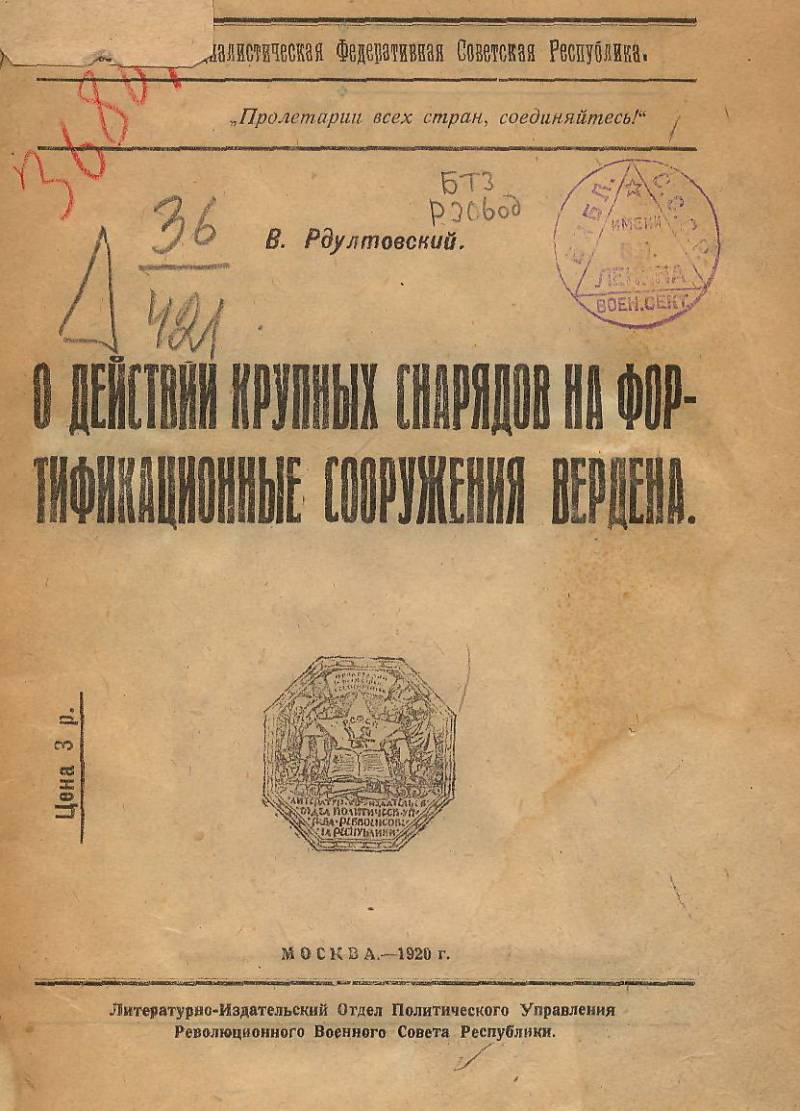
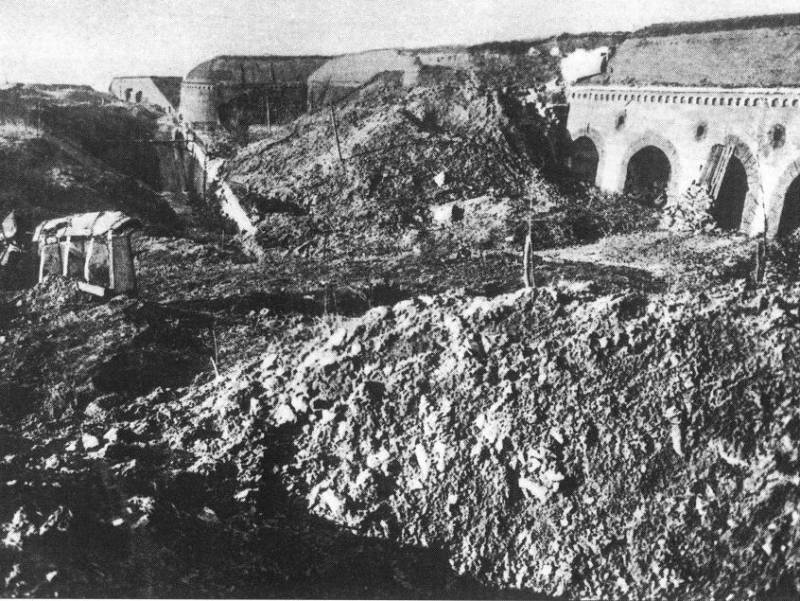
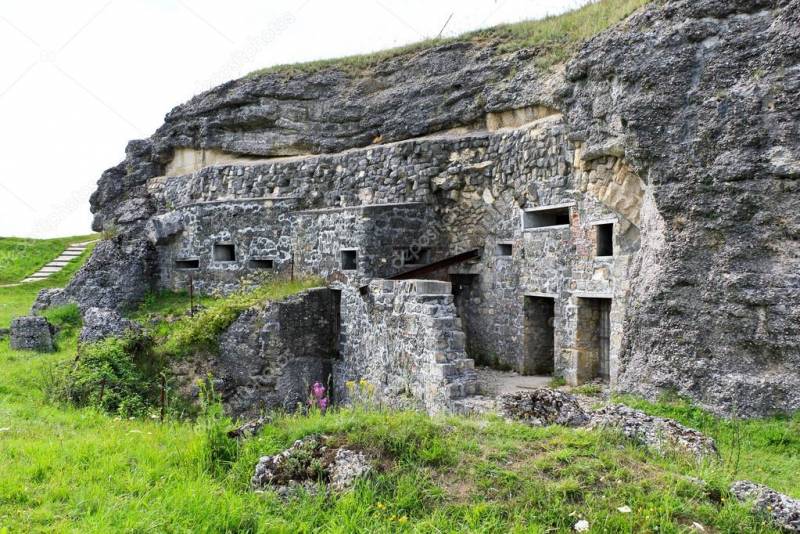
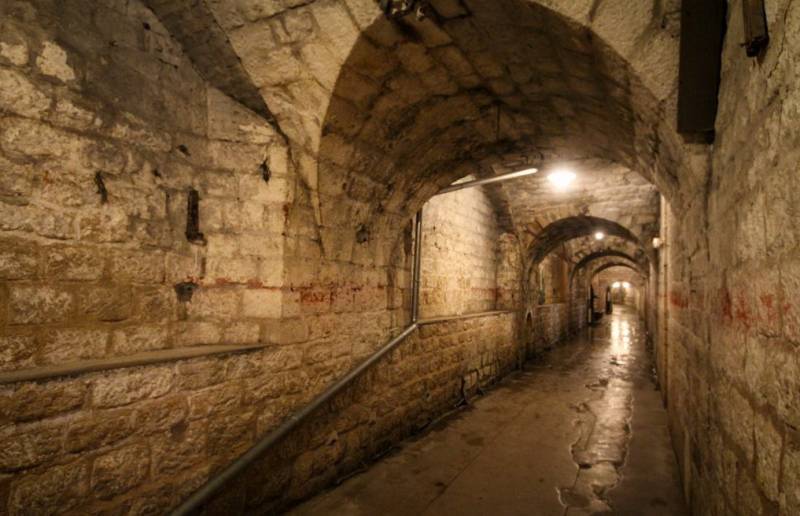
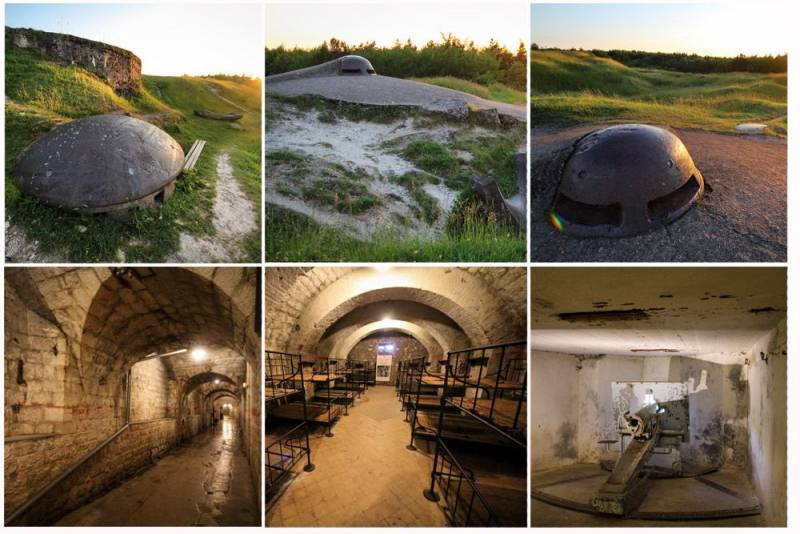
Information